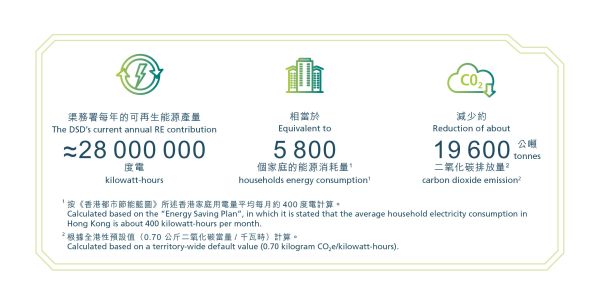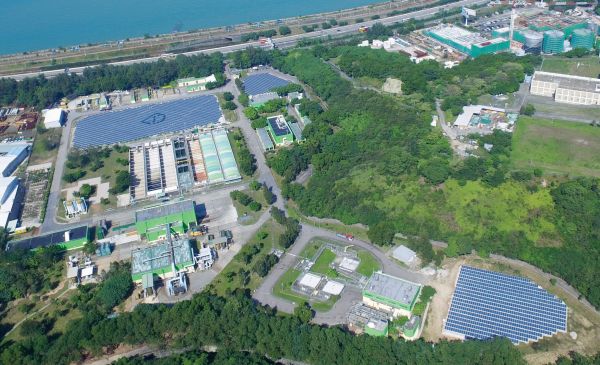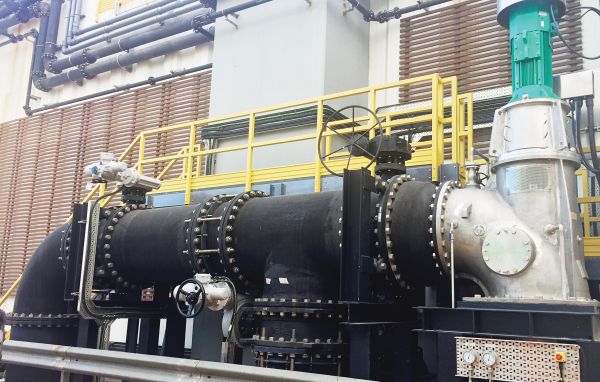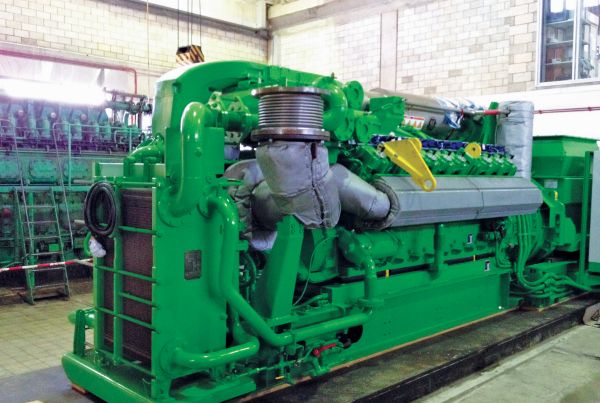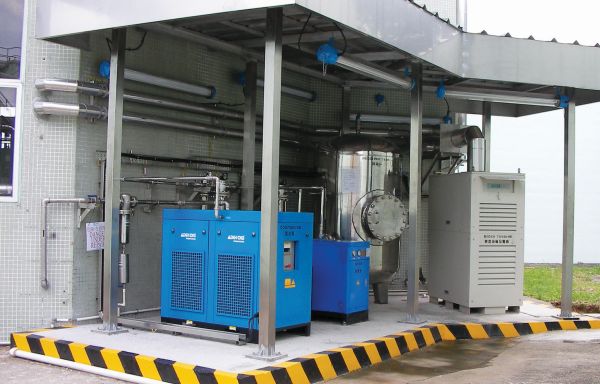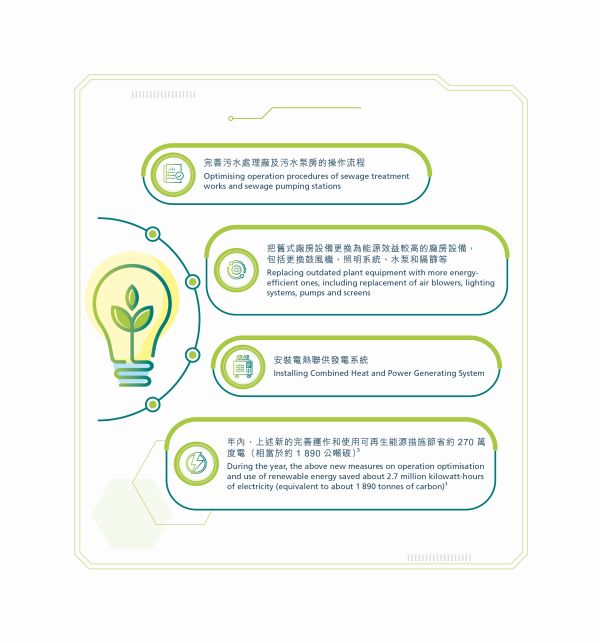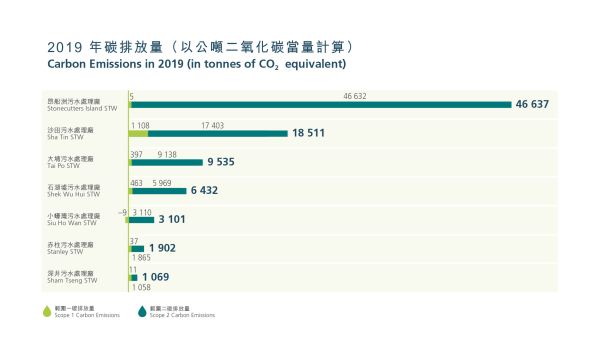Climate Change Mitigation and Adaptation
To address climate change, the DSD actively participates in the work of the Government's Inter-departmental Climate Change Working Group on Infrastructure to assist with revising infrastructure design standards as well as reviewing and reinforcing the resilience of existing infrastructure. Furthermore, we maintain close liaison with other cities and regions. Representing the HKSAR Government, the DSD joined the Connecting Delta Cities under the international organisation called C40 Cities Climate Leadership Group to exchange flood prevention techniques with other delta cities. Further, the DSD is also a member of the Hong Kong-Guangdong Joint Working Group on Environmental Protection and Combating Climate Change.
Harnessing Renewable Energy
In support of “Hong Kong's Climate Action Plan 2030+” published by the Government in 2017, the DSD has been proactively promoting the use of renewable energy (RE), including solar power, hydropower and biogas. Through a series of RE projects and energy saving initiatives, we hope to reduce electricity consumption by about 4% by 2024-25, as compared to 2018-19.
At present, RE installations in the DSD's plants generate about 28 million kilowatt-hours of electricity a year, constituting around 9% of the DSD's annual energy demand. In addition, the DSD obtained funding of $325 million in total for 16 major renewable energy projects from 2017–18 to 2019–20. Some of the projects were completed in early 2020, while the remaining projects will be completed progressively in the next few years. Upon full completion of the projects, additional energy equivalent to about 6.9 million kilowatt-hours of electricity can be generated per annum.
Solar Energy
To capture and harness solar power, the DSD has installed photovoltaic (PV) systems at selected outdoor facilities. As at the end of March 2020, we have installed PV panels at 14 STWs, 13 SPSs and one stormwater storage facility. Among these government installations, the solar farm at Siu Ho Wan STW is currently the largest installation of its kind and can generate up to 1.1 million kilowatt-hours of electricity annually. During the year, the DSD's PV systems generated about 1.26 million kilowatt-hours of electricity in total.
The DSD will continue to install PV systems in its facilities over the next few years. Upon completion of associated projects, the total installed capacity of the DSD's PV systems could reach three megawatts. One of these projects is the installation of thin-film PV panels at Stonecutters Island STW which utilitises space as far as possible, locations such as sedimentation tank covers will be occupied for solar power generation. This thin-film solar system will be the largest installation of its kind in Hong Kong, with a total installed capacity of over 0.6 megawatts.
Solar Farm at Siu Ho Wan Sewage Treatment Works
Hydroelectric Power
Upon commissioning of the Harbour Area Treatment Scheme Stage 2A, we installed a hydro-turbine system at Stonecutters Island STW, utilising the hydraulic energy from the flow of sewage to drive the turbine and generate electricity for in-house use. Operation of the system is fully automated and the generator speed is regulated according to the sewage flow rate at the STW. With a design generating capacity of 23 kilowatts, the system is expected to be able to generate up to 120,000 kilowatt-hours of electricity per annum, making it possible for the DSD to cut electricity costs and reduce carbon emissions. In view of the high effectiveness of this project, we are currently installing the second unit of hydro-turbine system at Stonecutters Island STW.
Hydro-turbine system at Stonecutters Island Sewage Treatment Works
Biogas
Biogas generated during anaerobic digestion of sludge during the sewage treatment process can be used to generate electricity and heat. A total of six combined heat and power (CHP) generators and three gas turbines (all running on biogas) have been installed in the DSD's STWs to generate electricity and heat for in-house use. During the year, the total energy generated by biogas at our STWs amounted to about 26.7 million kilowatt-hours. To maximise the use of biogas from the sludge treatment process for electricity and heat generation, the DSD is installing at Sha Tin STW and Tai Po STW additional CHP generator systems with a total generating capacity of 6.8 megawatts for electricity generation, heating and cooling. To further utilise renewable energy, we are planning to have another system installed in Tai Po STW to generate electricity from waste heat of CHP generators.
In collaboration with the Environmental Protection Department, the DSD has commenced operation of the Food Waste/Sewage Sludge Anaerobic Co-digestion Trial Scheme at Tai Po STW since September 2019 to generate electricity and heat for the STW by using biogas produced during food waste and sludge anaerobic co-digestion. Based on the concept of “waste-to-energy”, the scheme is aimed at reducing municipal solid waste while increasing biogas production. The digested sludge is dewatered and then transported to T• Park to serve as fuel in the incineration process; the heat generated during incineration is recovered and transformed into electricity.
Combined heat and power generator
Micro-turbine generator
Optimising Energy Consumption
To reduce energy consumption, the DSD keeps optimising the operation of its sewage and flood prevention facilities to enhance their energy usage efficiency in order to achieve the energy saving target. During the year, the new major energy consumption opitimising measures taken by the DSD are as follows:
3. Calculated based on a territory-wide default value (0.70 kilogram CO2e / kilowatt-hours).
Carbon Audit
Understanding that targeted emission reduction measures can be taken to reduce greenhouse gas emissions, the DSD is actively conducting carbon audits in its plants to identify major emission sources and formulate appropriate emission reduction measures such as reducing energy consumption of machinery, enhancing operation efficiency and utilising renewable energy. During the year, carbon audits were carried out at Stonecutters Island STW, Sha Tin STW, Tai Po STW, Shek Wu Hui STW, Siu Ho Wan STW, Stanley STW and Sham Tseng STW. Looking ahead, the DSD will continue to conduct carbon audits in STWs and formulate appropriate carbon reduction measures based on analysis findings so as to implement green operations.
Scope 1: Direct emissions generated from direct combustion of fuels + N2O emissions through nitrogen removal + Refrigerant emissions + Methane release from sludge digester - GHG removals by planting trees/applying solar power (in tonnes of CO2 equivalent)
Scope 2: Indirect emissions generated from the use of electricity + Towngas

